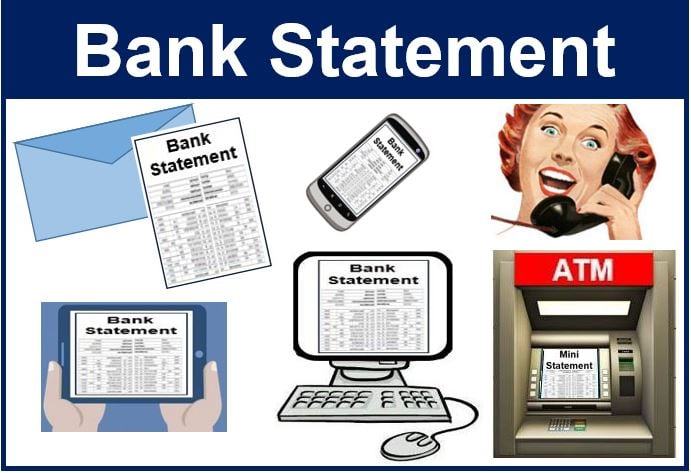A bank statement or account statement is a document that lists a bank customer’s financial transactions. It lists the transactions over a given period. The bank displays the statement either on paper or in electronic form.
Most statements cover a one-month period. The bank prints the opening balance from the prior month at the top and the net of all transactions below it.
Additionally, it prints the closing balance for the current month at the bottom. Subsequently, it will place that month’s closing balance at the top of the next month’s.
Traditionally, banks have posted customer’s statements every month. They are either sent to the account holder’s address or kept at the bank’s nearest branch for pick-up.

Bank statement – becoming paperless
There has been a gradual shift towards paperless, electronic statements. Customers who have online banking can view bank statements on their laptops, tablets, or smartphones.
Some banks offer direct statement downloads into the holder’s accounting software. In other words, customers today can see their bank statement on their banking app.
Most ATMs offer the option of viewing a mini-statement on the screen or obtaining a printed version. We also refer to this mini-statement as a transaction history.
Additionally, people with a telephone banking service can listen to a mini transaction history.
Always check your bank statement
You should carefully check your bank statements. You should also hold on to them for your own records.
Many of us trust that banks will always get it right. In fact, the number of mistakes they make is surprisingly high.
You should check carefully for incorrect or transposed numbers, as well as transactions that you had not authorized.
The US Department of the Treasury says that account holders have 60 days to contact their bank. That is, sixty days from the date a problem or mistake appears on their bank statement.
